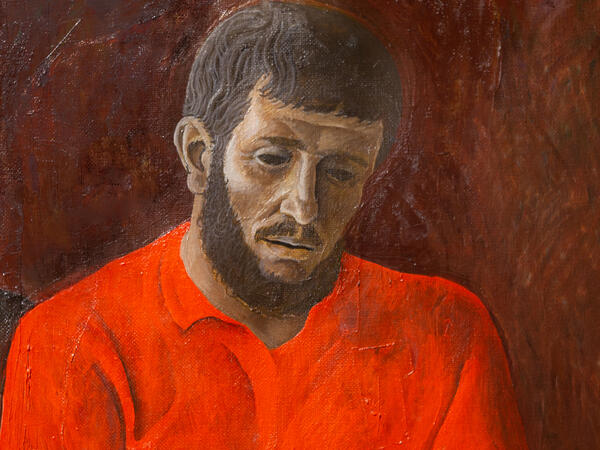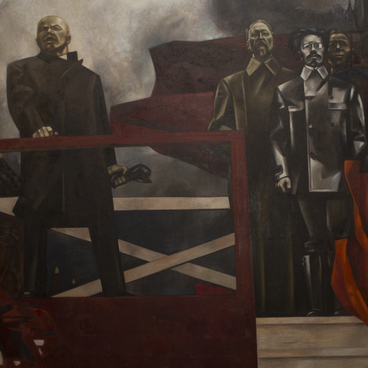The painting ‘Self-portrait in a Red Shirt’ is the best example of Oleg Filatchev’s artwork of the 1960s. During those years, intellectual characters, that distanced themselves from the mundanity and commotion of life, became primary in Soviet paintings.
Art experts view this self-portrait as a certain archetype painting: Filatchev depicted himself without any intention of specifying the exact time or circumstances related to the canvas. There are a few significant details that enhance this idea. The back of the chair seems to have taken the shape of an architectural object, which supports the painter’s strong body despite how elegant the chair’s silhouette is. With this image, the painter aimed to hint at the symbolic presence of classical art in his artwork. Oleg Filatchev also placed himself in a workshop that is free from time or space.
Oleg Filatchev is mostly known as a muralist (an artist who creates mural, mosaic and stained-glass paintings) and a talented portraitist. Experts of the Russian Academy of Arts noticed the elements of monumentalism even in his smaller paintings, saying,
Art experts view this self-portrait as a certain archetype painting: Filatchev depicted himself without any intention of specifying the exact time or circumstances related to the canvas. There are a few significant details that enhance this idea. The back of the chair seems to have taken the shape of an architectural object, which supports the painter’s strong body despite how elegant the chair’s silhouette is. With this image, the painter aimed to hint at the symbolic presence of classical art in his artwork. Oleg Filatchev also placed himself in a workshop that is free from time or space.
Oleg Filatchev is mostly known as a muralist (an artist who creates mural, mosaic and stained-glass paintings) and a talented portraitist. Experts of the Russian Academy of Arts noticed the elements of monumentalism even in his smaller paintings, saying,



